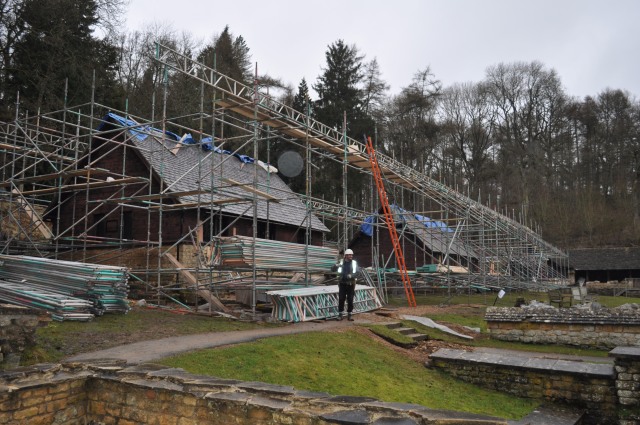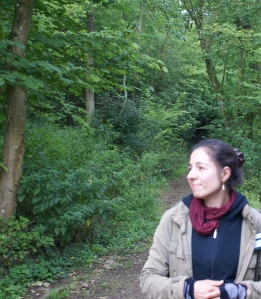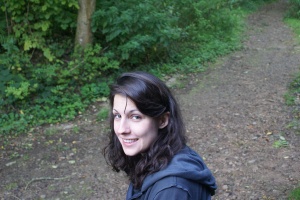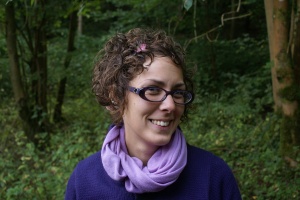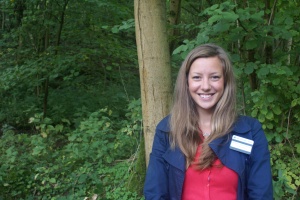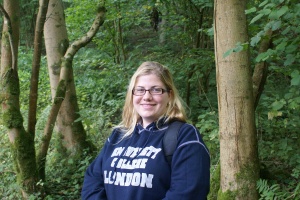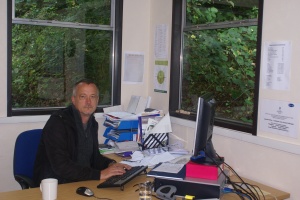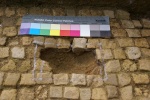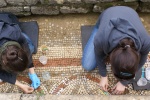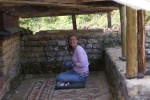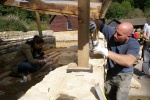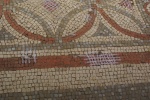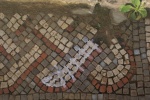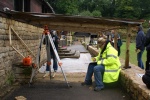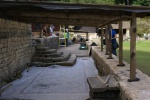At last the sun has come out and Chedworth can be seen in all its beauty, the mosaics are drying after the final cleaning and the colours showing more radiant than ever before. The sun is gradually drying the pavements and as a result the base supporting the tesserae layer is becoming firmer and holding the tesserae in position. This is very satisfying for the conservators as it means very little work will be required to preserve them in the “as found” condition. This means that visitors in the future will be able to see the mosaics exactly as the archaeologists saw them when they were originally discovered, without any restoration or modern interpretation.
As time goes on and the conservators become more familiar with both the scope and type archaeological material and how the design of the new building will enhance the presentation it becomes clear just how impressive the new display at Chedworth will be. The mosaic that is emerging from beneath the asphalt path is currently covered with wood and plastic roofs, with a protective sheet on the surface and the centre section is still covered with asphalt, but even in this condition the scale, at over 35 metres long, is striking and it is hard to imagine just how impressive this will look when it all is revealed and properly displayed in the building.
Things are moving up a gear as September starts with the archaeologists back to uncover the archaeology in rooms 7 and 8 in order that it can be assessed and recorded, then made safe before the building work begins. Also the stone masons are here removing the capping from the Victorian walls of the west range and levelling the same ready to receive the footings for the new building. As the activity increases the conservators have now designed and implemented a new survey system to record the condition of the mosaics and will very soon start reattaching loose material and protecting vulnerable areas before recovering begins.
There is still a lot to see here and a lot of experts all in one place who are available to discuss the works currently underway with visitors. So if you want to hear the whole story direct from the horses mouth come and visit us while the sun still shines at Chedworth.

